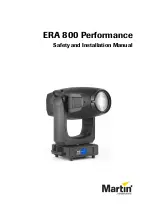
Sampling oscilloscope concepts
Trigger type
Trigger conditions
Edge
Edge triggers are the simplest and most commonly used trigger
type. An edge trigger event occurs when the trigger source passes
through a speci
fi
ed voltage threshold (trigger level) when the signal
is transitioning in the speci
fi
ed slope (rising or falling).
You can trigger on a rising or falling edge, as de
fi
ned by the slope
control.
Pulse
Width
You can trigger on pulses that are less than, greater than, equal to,
or not equal to a speci
fi
ed time period. You can trigger on positive
or negative pulses.
Pulse width triggers are primarily used to analyze digital signals.
Runt
A runt pulse is a pulse that crosses one threshold but fails to cross
a second threshold before recrossing the
fi
rst. Therefore, a runt
trigger needs two thresholds to de
fi
ne the two levels that a signal
must pass through to be considered a valid (nonrunt) signal.
You can trigger on any positive or negative (or either) runt signal.
You can also trigger on runt signals with pulse widths that are less
than, greater than, equal to, or not equal to a speci
fi
ed width.
Runt triggers are primarily used to analyze digital signals.
Trigger coupling
Trigger coupling sets what part of the input signal is used by the trigger circuit. Trigger coupling choices are
DC
,
LF Reject
,
HF Reject
, and
Noise Reject
.
DC Coupling
passes the trigger signal to the trigger circuit with no
fi
ltering. The scope may trigger on false events if
the signal is noisy.
HF Reject
blocks signals above 85 kHz from the trigger circuit. This reduces false triggering on high-frequency noise
when measuring lower-frequency signals.
LF Reject
blocks signals below 65 kHz from the trigger circuit. This reduces false triggering from low frequency noise
when measuring higher-frequency signals.
Noise Reject
reduces the trigger circuit input sensitivity. This reduces false triggering when measuring signals with
higher levels of noise.
Trigger modes
The Trigger
Mode
sets how the oscilloscope behaves in the absence or presence of a trigger. Trigger mode also enables
the trigger holdoff function.
Auto (Untriggered Roll) trigger mode.
The
Auto (Untriggered Roll)
mode sets the oscilloscope to acquire a
waveform even if a trigger does not occur. Auto mode uses a timer that starts when the acquisition is started, and the
pretrigger information is obtained. If a trigger event is not detected before the timer times out, the oscilloscope forces a
trigger. The length of time it waits for a trigger event depends on the time base setting (
Horizontal Scale
).
28
TBS2000 Series User Manual
















































